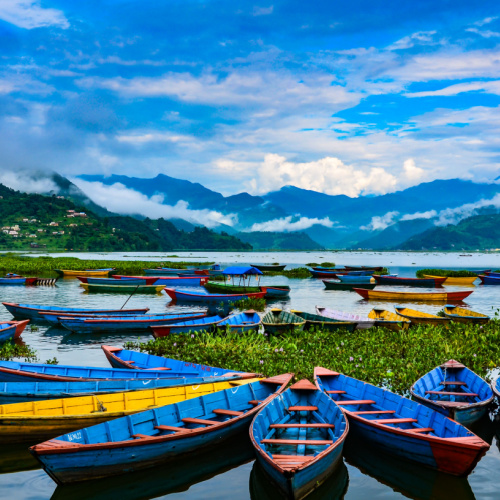Nepalese summers, particularly in the Terai (lowland) regions, are hot and humid. This season precedes the monsoon and sees increasing temperatures and humidity levels. In the hilly and mountainous regions, the temperatures are milder, making them more comfortable during this time. Summer is also a good time for high-altitude trekking, as the higher regions remain cooler.
- All
- Armenia
- Bali
- Bangladesh
- Bhutan
- Cambodia
- China
- Dubai
- Fiji
- French Polynesia
- Guam
- India
- Indonesia
- Iran
- Japan
- Jordan
- Kazakhstan
- Kyrgyzstan
- Laos
- Lebanon
- Malaysia
- Maldives
- Mongolia
- Myanmar
- Nepal
- Oman
- Pakistan
- Palestine
- Philippines
- Qatar
- Russia
- Saudi Arabia
- Singapore
- South Korea
- Sri Lanka
- Syria
- Taiwan
- Thailand
- Turkey
- Uzbekistan
- Vietnam
- Yemen
- More

Why Visit Nepal?
Nepal, a landlocked nation in South Asia, is renowned for its towering Himalayan peaks, rich cultural heritage, and spiritual significance. Covering approximately 147,516 square kilometers, it is home to eight of the world’s highest mountains, including Mount Everest.
Nepal’s history is intertwined with the Himalayan kingdoms, Tibetan Buddhism, and Sherpa culture. The nation’s diverse cultures and languages are evident in its festivals, architecture, and traditional practices. With a strong connection to the mountains and trekking, Nepal is a prime destination for hikers and climbers, while its spiritual sites, such as sacred Pashupatinath Temple and Lumbini, the birthplace of Lord Buddha.





